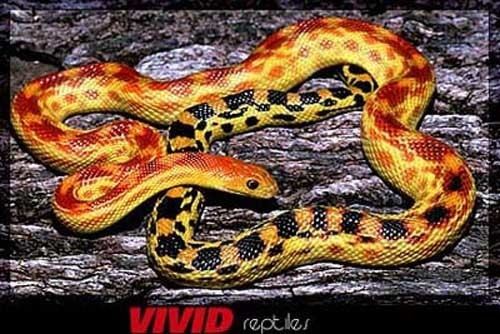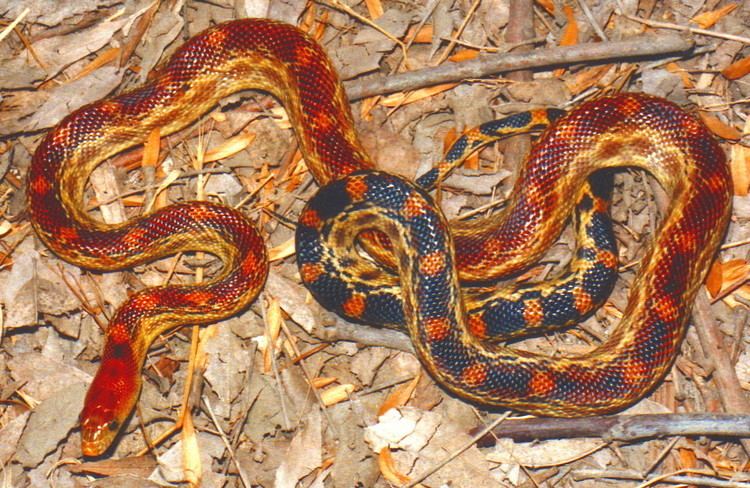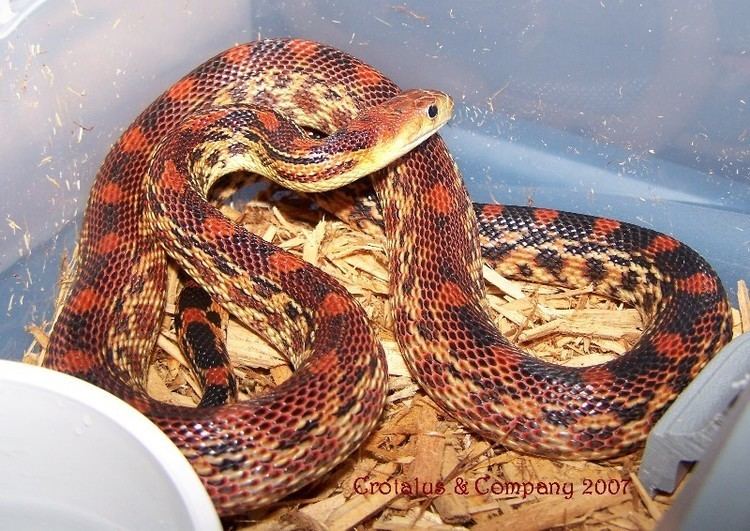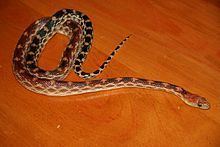Class Reptilia Phylum Chordata Rank Species | Subphylum Vertebrata Suborder Serpentes Subfamily Colubrinae Order Scaled reptiles | |
 | ||
Similar Pituophis, Pituophis catenifer, Pituophis catenifer affinis, Pacific gopher snake, Pituophis melanoleucus | ||
Baby cape gopher snakes
The cape gopher snake or Baja gopher snake (Pituophis catenifer vertebralis) is a subspecies of nonvenomous, colubrid endemic to extreme southern Baja California Sur, Mexico. They have become increasingly popular companions for people interested in the exotic pet trade due to their extreme color variations and relatively docile behavior.
Contents

Cape gopher snake hatchlings
Description
The cape gopher snake is named after the location of its natural habitat, the Baja California Peninsula. Here, the snake can only be found at high elevations on the southern tip of the peninsula, where temperatures usually remain a mild 78 °F (25.5 °C). Hobbyists who own a cape gopher snake commonly assume that the snake's natural habitat is significantly warmer, then proceed to create a dangerously hot environment. This lack of understanding is presumably due to the snake's rarity.

A single cape gopher snake can exhibit wild color and pattern variations along the length of its body. Most begin with bright H-shaped marks in differing orange shades against an intense yellow background. As you trace the patterns down toward the tip of the tail, they begin to change in shape and darken until they are completely black while the yellow background loses its intensity. Other cape gopher snakes' patterns begin as black stripes before evenly transforming into the familiar marks of the vertebralis subspecies. When the snake is coiled up and alone, many people mistake the differing colors and patterns for a multiple number of snakes.

The average total length of an adult cape gopher snake ranges from 36–66 in (91.5–168 cm). Hatchlings are born at a respectable 12–18 in (30.5–48 cm) in total length. When threatened, the snake flattens its head while simultaneously vibrating its tail and hissing, closely imitating a rattlesnake.
Habitat

Most information gathered about the location of cape gopher snakes is anecdotal, but the area in which they range is incredibly diverse. Dominating the landscape is a Sonoran-like desert fraught with cacti, but you can also find dry tropical forests, arid tropical scrubs, desert shores and the Sierra de la Laguna (an area designated by UNESCO as a global biosphere reserve because the "semi arid to temperate subhumid climate area represents highly important and contrasted ecosystems." This area is known to go months, even years, without rainfall, yet can be saturated with the flood waters of a Tropical Storm or Hurricane in a span of just one week.
Behavior

Young cape gopher snakes are aggressive and very easily agitated. Their temperament varies with each individual snake, but it is not uncommon for a young one to strike frequently at anything that moves. This aggressive behavior doesn't last long. Once they pass this phase, they are notably more docile and rarely (if ever) strike at anything (food is an exception). Still, the cape gopher snake has a reputation for being nervous when handled. They remain still, but inevitably become active again and squirm before suddenly calming and starting the cycle over.
Prey
The cape gopher snake's prey is thought to include many small rodents, birds, and eggs, though there really is no certainty due to a lack of research of these snakes in the wild. In captivity, small rodents and eggs suffice.

